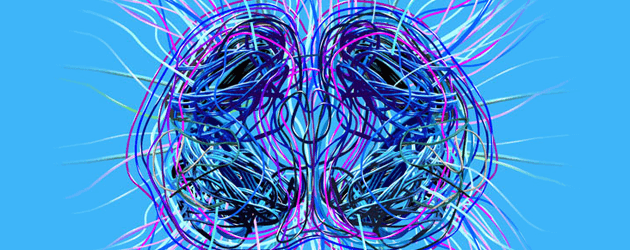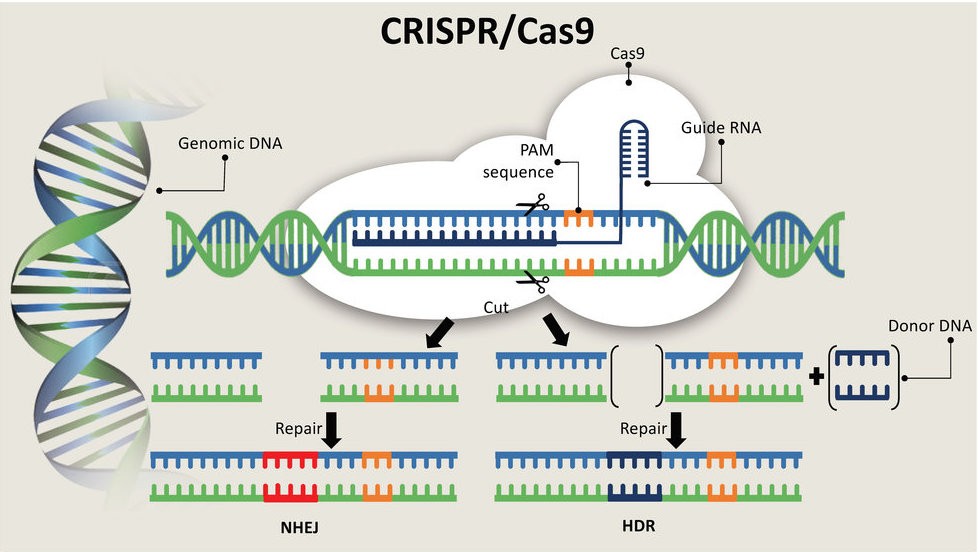
Here’s a fun exercise: type “CRISPR” into a news search engine. There are more research stories than one has time to read.
It was only two years ago nobody outside a lab had heard of CRISPR. Now bros everywhere inject themselves with CRISPR cocktails, crossing their fingers for an optimal outcome.
Prior to this, hacking the human experience had one only a few pathways, subdermal implants, intake manipulation (diet), supplementation, exercise, and the variety of meditation techniques.
Not long ago, all biohackers talked about was enhancing otherwise normal humans with superpowers.
Meanwhile, science has toed the line on microscopic [read: sexy] methods of changing the human experience at a genetic level—not for a cycle of steroids only to normalize later or while the body tolerates some tacky implant, but—forever.
Hackers once consumed with the idea of becoming Wolverine before 2020 now read articles about fighting ALS cheering, “Yeah, Science, go!”
Biohackers believe that the more science conquers legitimate problems, the sooner we can co-opt science’s key learnings to grow bone-blades from our knuckles. When Science wins, we all win.
It is because of this that long before we will be able to turn ourselves into nutrient-saturated superhuman cyborgs, we’ll eliminate pathologies and bring everyone to a higher benchmark.
Speed of CRISPR-Cas9
Body Hacks first covered CRISPR earlier this year as it may one day apply one day apply to biohacking. At that time there was one CRISPR method in the news, the Cas9 procedure. Since then, variants of CRISPR’s gene editing have made the news.
TL;DR version: The CRISPR-Cas9 process allows humans to edit sequences of genetic code.
Body Hacker Josiah Zayner recently started injecting himself with a CRISPR cocktail intended to make him grow more muscles.
Within less than a year of CRISPR making the mainstream press, the biohacker community has taken the lead to see what could happen with the nascent technology.
Another young man named Tristan Roberts, as reported by Gizmodo, recently started treating his HIV with an off-grid CRISPR cocktail.
In light of these events, a line from Jurassic Park comes to mind:
“You stood on the shoulders of geniuses to accomplish something as fast as you could, and before you even knew what you had, you patented it, and packaged it, and slapped it on a plastic lunchbox, and now you’re selling it, you wanna sell it.”
Perhaps a little dramatic, but it seems the fictional character of Dr. Ian Malcolm knew what he was talking about way back in 1993.
CRISPR 2.0
Never content, Science has already taken the next step in the CRISPR plan. Instead of editing gene sequences, like they did in Jurassic Park, we can now manipulate smaller pieces of the code, the chemical bases that make up the pairings in DNA’s double helix.
The base editing process, called ABE7 (but CRISPR 2.0 is catchier) is not only more precise than the Cas9 process, it seems it’s safer too.
In May of 2017, some research using Cas9 created undesirable secondary mutations. It was not welcome news, but shouldn’t have surprised anyone.
High School biology teaches us enough about genetic mutation to know that messing around with the base code may have negative repercussions. Still, these cases were isolated.
This 2.0 version may be perfect for addressing a large chunk of diseases associated with base mutations.
CRISPER 3.0
Despite the catchy sound of CRISPR 2.0, this is the wrong way to think about gene-editing. What we are on the cusp of is more of a plane than a line.
The developments from what we learn today will not move a linear path, but they will fan out in multiple directions.
In fact, it may be fairer to use the cube instead of the plane as a model. Science is about to get 3D. No doubt, we’ve breached Pandora’s box.
Whereas the pathways into other methods of hacking the human body look dark from here. The body rejects implants.
Nootropics are no better than their supplement predecessors, and diets suck.
Gene modification is here and it works. It’s getting better, good enough to give us hope for the diseases hurting us today, but also for the prospect of transforming humans into the superhumans we want to become tomorrow.
Alright, back to stitching my Wolverine costume.
Sources: nature.com, technologyreview.com, newscientist.com


